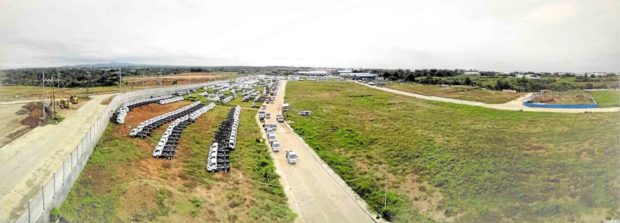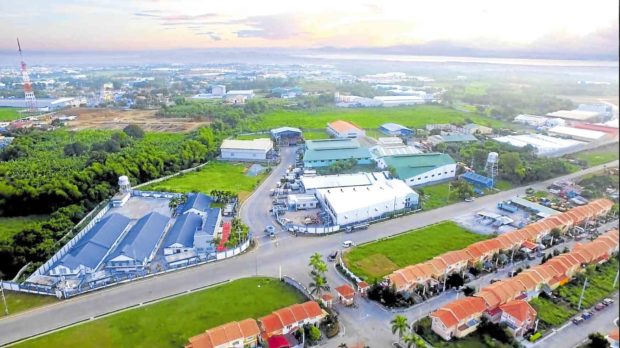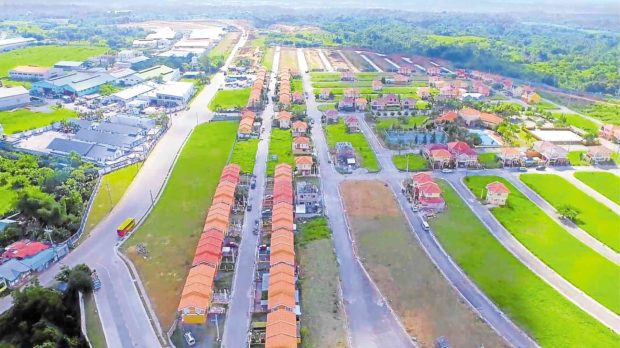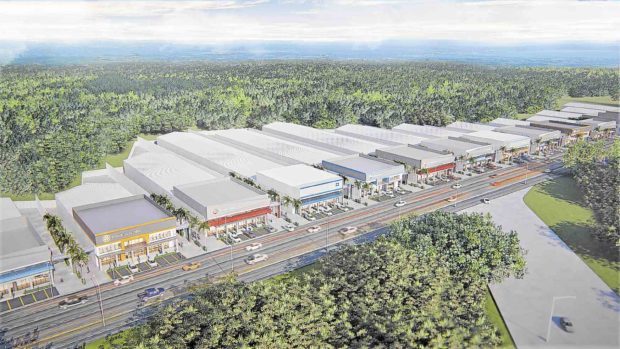Cathay Land spurs growth with Clip

From the time Cavite Light Industrial Park (CLIP) was set up about eight years ago, Cathay Land continues to attract local and foreign investors, generate fresh job opportunities in South Luzon, and uplift the lives of the people and community where it is located.
And today, that opportunity to create a far greater and more lasting impact has become even more apparent given the favorable macro-economic conditions, a robust manufacturing sector, an aggressive infrastructure buildup particularly in the Calabarzon Region, and more recently, the ongoing US-China trade war—all of which have prompted foreign manufacturers to consider alternative locations for their manufacturing and warehousing depots, including the Philippines.
Integrated in a township
Creating an industrial park, according to Cathay Land president Jeffrey T. Ng, has long been integrated in their township plans in Cavite province.
“It’s actually part of an integrated mixed use city called Mallorca City. We have around 70 hectares (allocated) for our Cavite Light Industrial Park, while 30 hectares will be for the residential and commercial,” Ng explained.
“From the start, we wanted to have an industrial park. We launched Phase 1 about eight years ago and now, because of the bigger demand, we saw more companies expanding and relocating their warehouses and factories from Metro Manila, for example, Pasong Tamo, Makati where land prices are now about P200,000 to P300,000 per sqm. So it doesn’t make sense anymore to have their manufacturing operations and warehouse depot in Makati, Taguig, Parañaque or Las Piñas. Many of them have started to move to Cavite,” he further said.
Article continues after this advertisement
CLIP thus provides its locators easy access to Metro Manila and across the other provinces in the Calabarzon Region via five expressways (three completed and two under ongoing development) and Governor’s Drive as well.
“We’re in a very central position in Luzon, plus our prices are quite reasonable at around P9,000 per sqm,” Ng added.
Currently, CLIP has 16 locators that include Bauch Laboratories Inc., Centro Manufacturing Corp., Sanmarco Tiles Inc., Vermrich Foods Corp. among others. The park mainly offers lots for sale but locators also have the option for lease as well. Companies here are mostly engaged in light manufacturing, assembly operations, and warehousing.
Sweet spot
Cathay Land is indeed in the sweet spot to tap the robust demand and increasingly lucrative opportunities in industrial segment. In February this year, Cathay Land launched Phase 2 of CLIP and, given the sustained demand for industrial lots, the company is now pushing up the launch of Tranches 3 and 4 under the same phase. A total of 53 lots—with sizes ranging from 1,400 sqm to 4,738 sqm—are available at an average selling price of P25 million per lot. Development of CLIP is being done in three phases.
“We’re pleasantly surprised at the demand for industrial lots that’s why we decided to launch (a new phase) this year. We would attribute (that growth in demand) to the ongoing US- China trade war, the steep capital appreciation of lots in Metro Manila, and the ongoing infrastructure developments in Calabarzon. Industrial estate in Cavite is now much more attractive—it makes more economic sense for companies to just move and put up their warehouses and factories in Cavite Light Industrial Park,” Ng explained.

As it is, the Philippines has been seeing a surge in pledges and investments from China. Data from Bangko Sentral ng Pilipinas showed that from 2013 to 2015, foreign direct investment (FDI) from China averaged $16 million (P861 million) a year. This has since surged to an annual average of $70 million (P3.6 billion) from 2016 to 2018.
Catalyst for growth
So far, around 40 hectares of CLIP have already been developed while the remaining 30 hectares may likely be completed and offered by next year to locators engaged in light manufacturing, warehousing and depot operations and assembly. But it doesn’t end here.
According to Ng, they are now planning to develop new industrial sites within their existing 1,500-hectare landbank, as well as acquire more land in Cavite and Batangas. He is hopeful that they will jumpstart the process to creating a new industrial park in the region by next year, which would allow them to start developing and selling in two to three years’ time.
This despite the fact that the potential for profit is greater in other property segments.

“In our own way, we are spurring economic development in the countryside by providing a location for manufacturers who can provide better paying jobs. It’s not just about profits alone. We want to create a legacy and make a positive impact where we have our landholdings, which is mainly in Cavite. When we do our developments, both the social impact and economic impact are just as important for us,” Ng concluded.